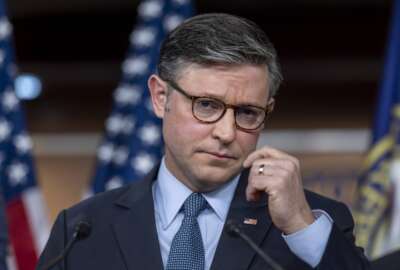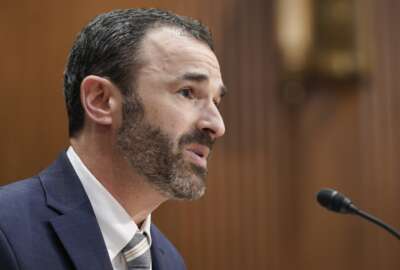Long-term budget outlook key to fiscal success
Under the current annual budget cycle, the difficult struggle to pass appropriations bills consumes too much valuable time and effort, says Robert Bixby, executive...
Robert Bixby’s column is part of Federal News Radio’s special report, Now or Never: Ideas to Save the Failing Budget Process, in which eight budget experts offer their take on what can be done to fix the broken system.
Commentary by Robert L. Bixby
Executive Director
The Concord Coalition
In recent years, the congressional budget process has collapsed, resulting in missed deadlines, shutdowns and even the threat of default. Money has been wasted, agencies have found it impossible to plan, creditors couldn’t be sure they would be paid on time, and very little has been done to prevent the debt from growing at an unsustainable rate. 
One easy-to-understand “reform” might be for Congress to simply follow the rules — and statutory requirements — that are already in place.
If the House and Senate manage to follow “regular order” and complete work on all 12 appropriations bills by Oct. 1, when the next fiscal year begins, it would avoid the risk of another government shutdown and enable federal agencies to make realistic plans for 2015.
Strictly adhering to pay-as-you-go (PAYGO) budget rules for entitlement expansions and tax cuts would also help. These rules require Congress to avoid more red ink by offsetting the cost of new programs or expansions of existing programs.
More needs to be done, however, to instill the process with a longer-term focus.
As a start, the annual appropriations scramble should be replaced with a two-year budget cycle. In the first year of the cycle, Congress would determine spending levels for federal agencies, much as it does now. The second year, however, would be dedicated to congressional oversight and eliminating programs that appear unnecessary or ineffective.
Under the current annual cycle, the difficult struggle to pass appropriations bills consumes too much valuable time and effort. A two-year budget cycle, in addition to allowing better spending oversight, would give lawmakers more time to address longer-term fiscal challenges.
The current budget process encourages short-term thinking by focusing on a five-year or 10-year budget window. Yet, as analysts from all sides generally agree, our truly unsustainable fiscal problems stem from commitments that extend far into the future.
Budget windows of five or 10 years may have been adequate back when most federal spending was appropriated annually. It is insufficient when most of the budget consists of entitlement programs rising on autopilot. It’s time to include the long term in the budget process.
As noted, adherence to PAYGO would be a positive step. However, it falls short of addressing the central long-term budget challenge, which is constraining the cost of existing entitlement programs. That’s because PAYGO does not apply to current-law benefits.
In fact, there is nothing in the budget process that requires Congress to review the current-law budget outlook beyond the next 10 years, much less take corrective action.
Congress could take a major step toward improving the transparency of our future obligations and encourage actions to deal with them by mandating that future budget resolutions set targets and estimates of entitlement and tax policy proposals stretching out for at least 25 years.
Long-term targets for revenues and outlays by major spending category should be established as part of the annual budget resolution. Congress should note how major legislative proposals that are assumed in the resolution would affect these targets — and how the targets differ, if at all, from current-law projections by the Congressional Budget Office (CBO).
Separate targets could be established, as a share of GDP at five-year intervals through 2040, for total revenues, defense spending, domestic discretionary spending, Social Security, Medicare, Medicaid, other entitlements and net interest.
If the targets differ from current-law projections, CBO could be required to issue a report with an illustrative menu of reform options capable of generating the proposed savings.
For enforcement purposes, triggers could be added that would either trim spending down to the targeted levels or raise revenues.
The federal debt limit is also ripe for reform. The basic problem is that the debt limit does not actually exert control over the nation’s fiscal policies.
As the Government Accountability Office explains: “The decisions that create the need to borrow are made separately from — and generally earlier than — the decisions about the debt limit.”
Another problem with the debt limit is that the amount often seems to have been pulled out of thin air, or determined by political calculations having to do with the election cycle. This is an arbitrary process that further separates the debt limit from any meaningful economic rationale.
The debt limit would make better sense if it were tied more closely to the tax and spending decisions that require additional government borrowing. As it stands, lawmakers can make those decisions and then balk at the necessary consequence of having to raise the borrowing limit, as has often happened in recent years.
The key question with the federal debt is how it compares to the size of the American economy. If the debt grows faster than the economy, it is unsustainable. If it grows more slowly than the economy, over time the debt — regardless of its nominal size — will become less and less of a problem.
So it would be helpful if the debt limit could be tied to GDP growth or perhaps some other economic measurement that is relevant to the nation’s fiscal path.
It’s important to remember, however, that we will need more than changes in the budget process to successfully meet the nation’s fiscal, economic and demographic challenges in the years ahead.
No matter what budget system Washington has in place, elected officials must still ultimately make some difficult choices that involve substantial public sacrifices now in return for a brighter future for ourselves and subsequent generations.
Robert L. Bixby is executive director of The Concord Coalition, a national, non-partisan organization that has advocated more responsible federal budget policies for more than two decades.
Copyright © 2025 Federal News Network. All rights reserved. This website is not intended for users located within the European Economic Area.





